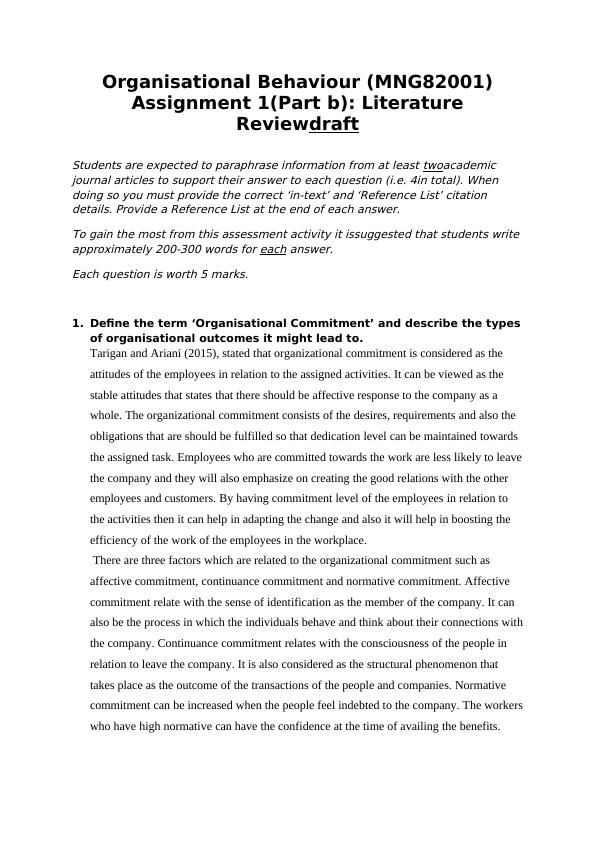Organisational Commitment and its Types
Paraphrase information from academic journal articles to define and describe organisational commitment and its outcomes, and to describe strategies for building organisational commitment.
3 Pages1039 Words42 Views
Added on 2023-01-12
About This Document
This document provides an overview of the concept of organisational commitment and its types, including affective commitment, continuance commitment, and normative commitment. It also discusses the potential outcomes of organisational commitment, such as job satisfaction and increased productivity. The document includes paraphrased information from academic journal articles and provides proper citation details. The strategies of transformational leadership and positive organisational culture, supported in the academic literature, are briefly described as potential ways to enhance organisational commitment.
Organisational Commitment and its Types
Paraphrase information from academic journal articles to define and describe organisational commitment and its outcomes, and to describe strategies for building organisational commitment.
Added on 2023-01-12
ShareRelated Documents
End of preview
Want to access all the pages? Upload your documents or become a member.
Organisational Commitment and its Types
|3
|809
|53
Organisational Commitment and its Types
|3
|1070
|346
Organisational Commitment and its Types
|4
|1057
|28
Strategies in relation to organizational commitment
|6
|1860
|75
Job Involvement and Organisational Outcomes
|2
|766
|257
Organizational Commitment and Strategies
|6
|887
|75

